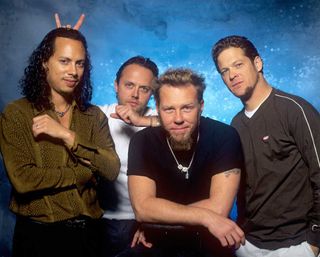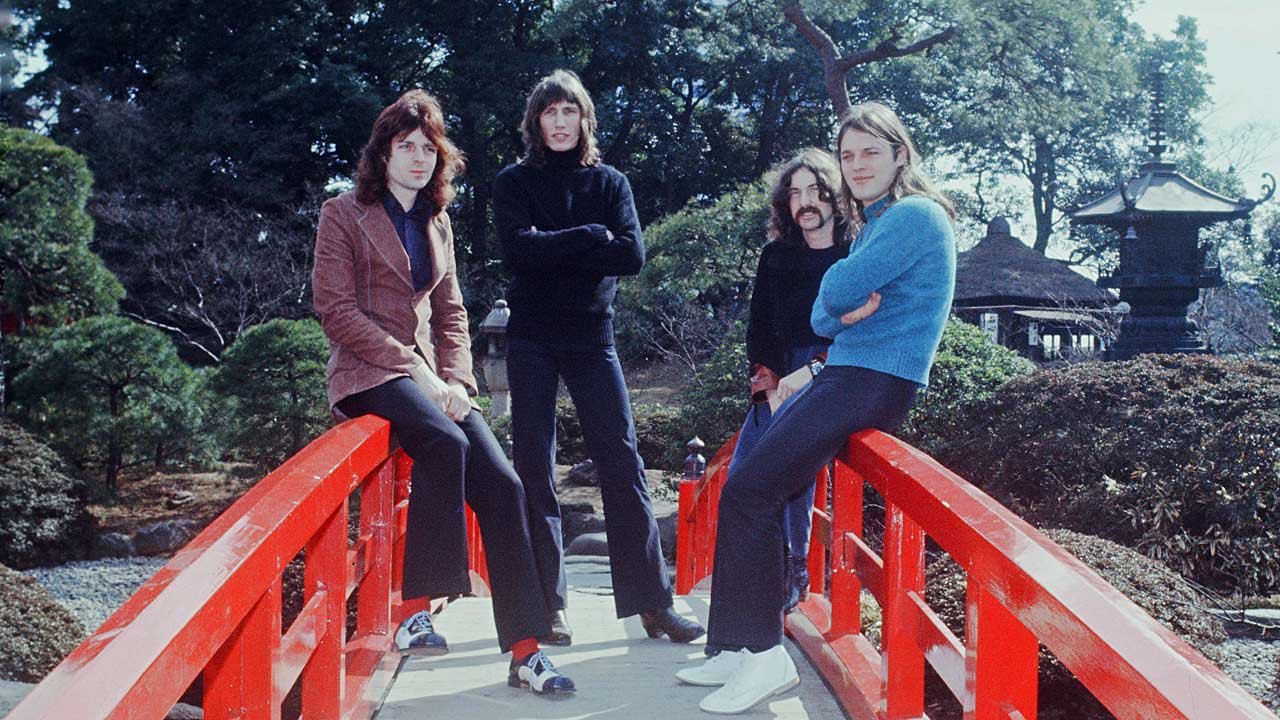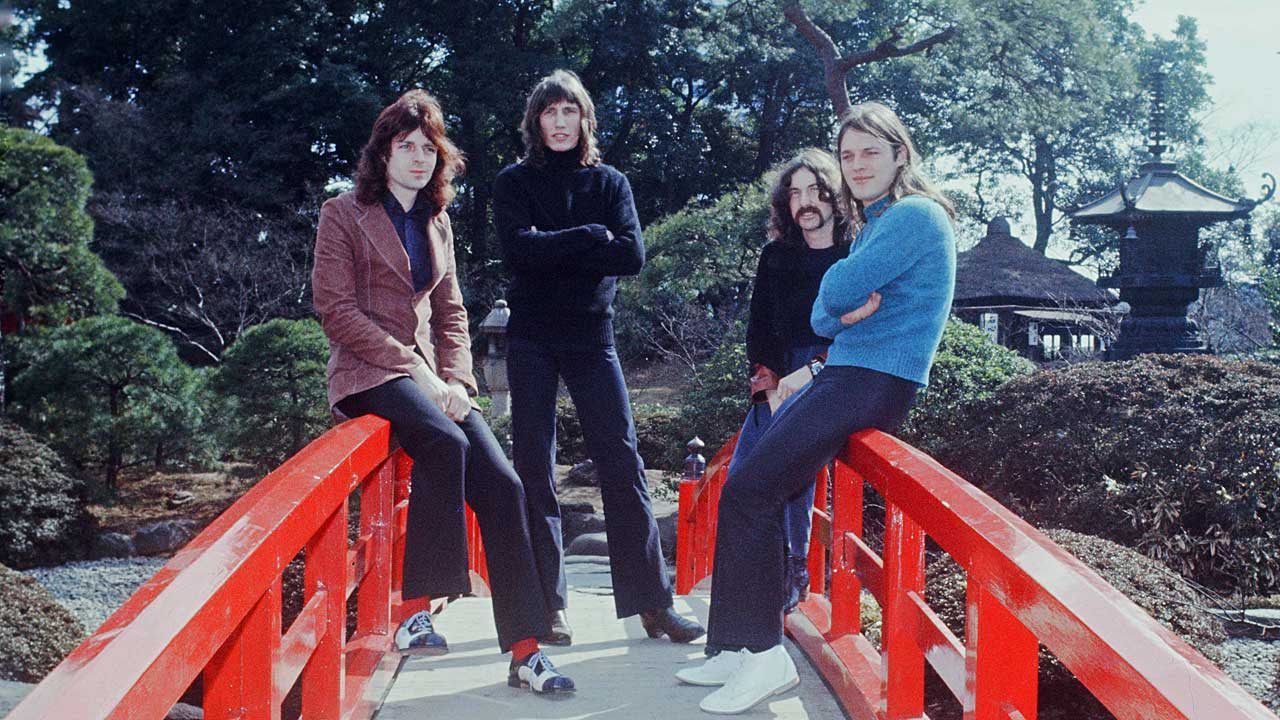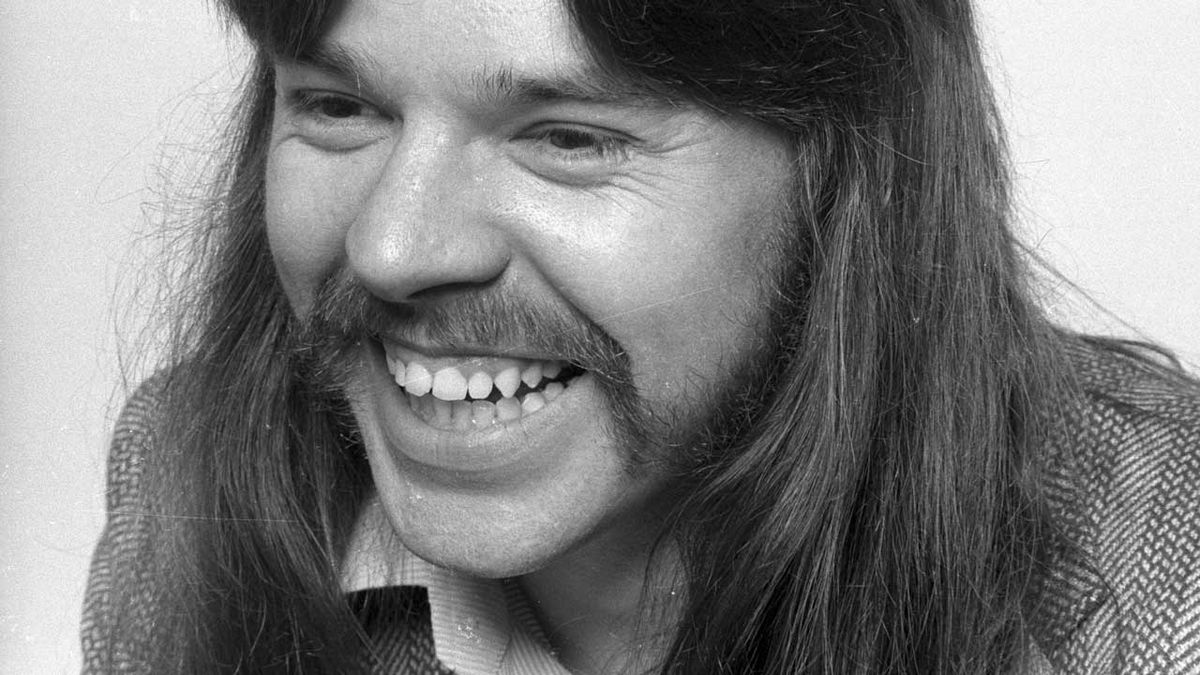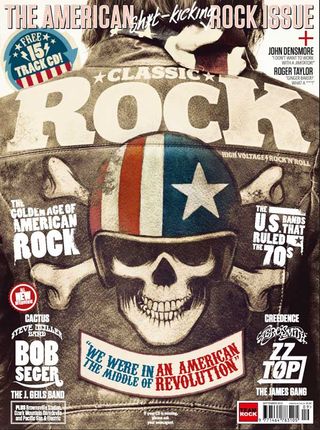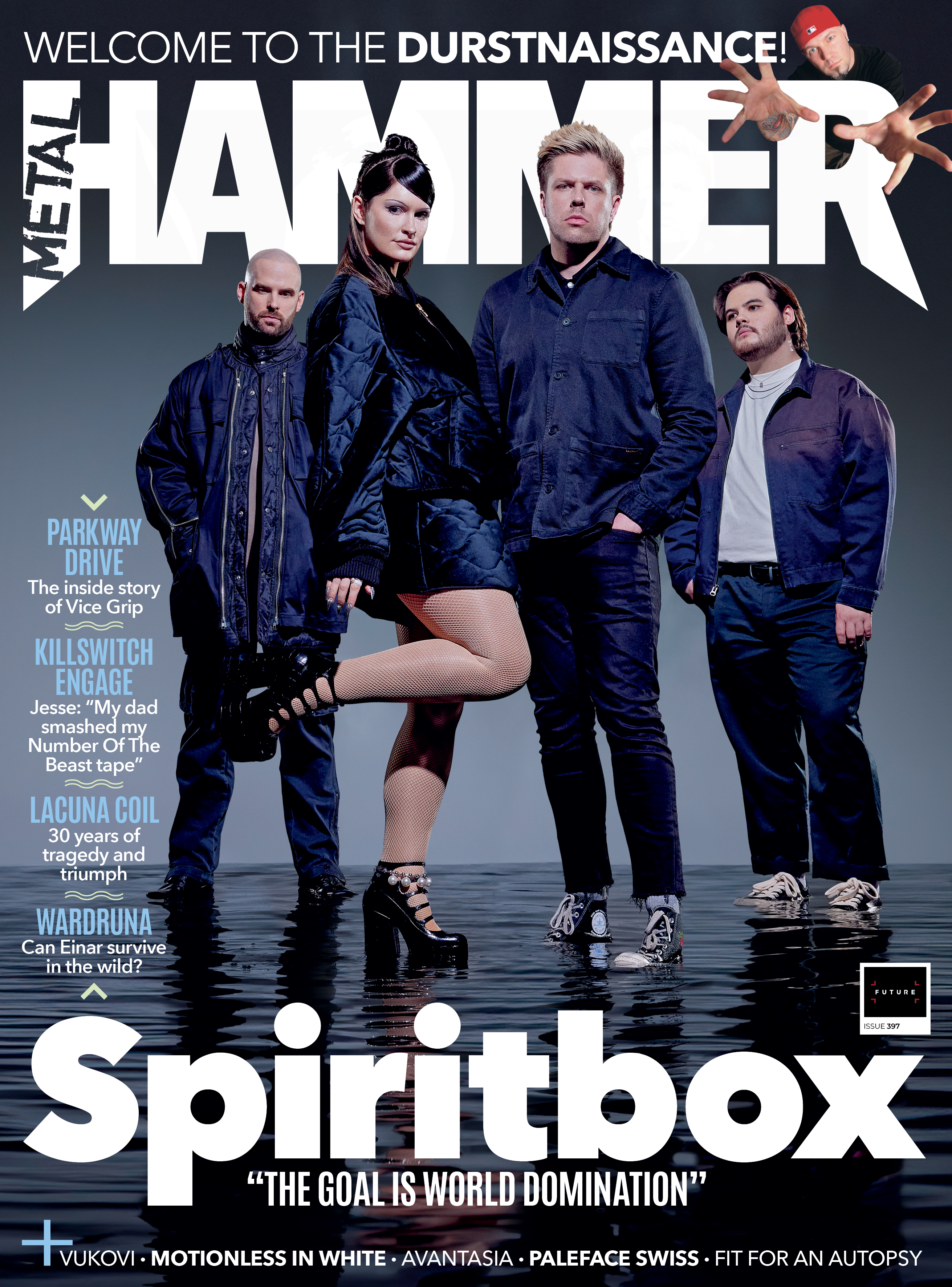
Feature Photo: L Paul Mann / Shutterstock.com
Spellbinding music is not confined to the mystical—it’s something felt as much as it is heard. While some songs captivate through haunting lyrics of mysticism and magic, others cast their spell through hypnotic grooves, ethereal melodies, or performances so powerful they seem to exist outside of time. This list of the 10 Most Spellbinding Songs of All Time recognizes tracks that have mesmerized audiences in different ways—some through lyrical imagery that evokes mystery, others through musical arrangements that feel entrancing, and a few that embody both. What unites them all is their ability to transport listeners into another realm, whether through the otherworldly wail of a vocal, the atmospheric tension of an instrumental, or the sheer magic of an unforgettable song.
Fleetwood Mac’s “Rhiannon” stands as a defining example of Stevie Nicks’ mystical songwriting, bringing together poetic lyrics and a hypnotic musical arrangement that made it one of the band’s most iconic tracks. Nina Simone’s rendition of “I Put a Spell on You” transformed the song from a bluesy lament into a smoldering, theatrical performance dripping with raw emotion. Til’ Tuesday’s “Voices Carry” wrapped its haunting story of silenced love in an unforgettable, urgent melody that lingers long after the final note. “Sorcerer” by Stevie Nicks and Sheryl Crow shimmered with an ethereal quality, reinforcing Nicks’ reputation as one of rock’s most enigmatic voices.
Bruce Springsteen’s “I’m On Fire” proved that spellbinding music doesn’t need theatrics—its minimal arrangement and hushed delivery created an atmosphere of quiet, smoldering intensity. Tom Petty and the Heartbreakers’ “Mary Jane’s Last Dance” wove together classic rock, folk influences, and a hypnotic rhythm that made it feel like a story unfolding in a dream. Classics IV’s “Spooky” became a jazz-infused pop standard so compelling that it was reimagined in multiple hit versions, each carrying its own unique mystique.
Santana’s take on “Black Magic Woman” extended the song’s original blues roots into a Latin-rock masterpiece, layering its spellbinding nature with intricate guitar work. The Eagles’ “Witchy Woman” built its hypnotic allure through slinking rhythms, a sultry vocal delivery, and an undeniable air of mystery. Fleetwood Mac’s “Hypnotized” lived up to its name, enveloping listeners in a trance-like groove that made it one of the band’s most mesmerizing deep cuts.
Each of these songs holds a unique power, demonstrating that spellbinding music is not limited to one genre, theme, or style. Whether it’s the seductive pulse of a rhythm section, the shimmer of a reverb-drenched guitar, or the haunting echo of a lyric that stays in the mind long after the music stops, these tracks prove that some songs don’t just play—they enchant.
# 10 – Hypnotized – Fleetwood Mac
Fleetwood Mac’s “Hypnotized” stood as one of the most intriguing compositions of the band’s transitional era, blending surreal storytelling with an ethereal groove. Released on Mystery to Me in 1973, the song was written and sung by Bob Welch, whose tenure with the band marked a bridge between their early British blues roots and the polished mainstream success they would achieve later in the decade. Recorded at Rolling Stones Mobile Studio and produced by Martin Birch, “Hypnotized” reflected a shift in Fleetwood Mac’s sound, leaning into jazz-inflected rhythms and dreamy atmospheres that would later become synonymous with their most celebrated work. Mick Fleetwood’s steady drumming, John McVie’s fluid basslines, and Welch’s mesmerizing guitar work created a hypnotic effect that fully justified the song’s title.
Lyrically, “Hypnotized” wove a mystifying narrative that blurred the lines between reality and illusion. Welch delivered enigmatic verses about unexplainable occurrences, including UFO sightings and supernatural landscapes, evoking an eerie yet captivating ambiance. The imagery of a strange, glass-like pond in North Carolina and a man flying without an airplane in Mexico reinforced the song’s dreamlike quality, making it feel like a journey into the unknown. Rather than presenting a clear storyline, the lyrics created an impressionistic, almost trance-inducing effect, heightening the song’s otherworldly appeal. This approach set “Hypnotized” apart from the blues-based storytelling of Fleetwood Mac’s earlier material, demonstrating Welch’s knack for crafting evocative, almost cinematic songwriting.
Although Mystery to Me did not produce any major hit singles, “Hypnotized” became one of Fleetwood Mac’s most beloved deep cuts, garnering significant airplay on FM rock radio throughout the 1970s. The song’s hypnotic groove and unorthodox subject matter made it a favorite in live performances, where Welch’s intricate guitar lines and Fleetwood’s fluid percussion took on an almost improvisational feel. “Hypnotized” also foreshadowed the band’s increasing embrace of atmospheric and melodic textures, a direction that would reach its pinnacle after Lindsey Buckingham and Stevie Nicks joined the lineup two years later.
In the context of this list, “Hypnotized” fits seamlessly among the most spellbinding songs of all time, thanks to its entrancing rhythm, mysterious lyrics, and immersive sonic landscape. While other songs on the list may achieve their hypnotic effect through layered production or haunting vocal performances, Fleetwood Mac’s contribution relies on the subtle power of suggestion—pulling listeners into a surreal world that lingers in the mind long after the final note fades.
Read More: 10 Most Rocking Fleetwood Mac Songs
# 9 – Witchy Woman – Eagles
The spellbinding aura of “Witchy Woman” set a mysterious and mystical tone that distinguished it from much of The Eagles’ early catalog. Released in 1972 as the second single from their self-titled debut album, the song was written by Don Henley and Bernie Leadon, marking Henley’s first major contribution to the band as a songwriter and lead vocalist. Recorded at Olympic Studios in London and produced by Glyn Johns, “Witchy Woman” showcased a haunting combination of Leadon’s slithering, minor-key guitar riff and Henley’s evocative lyrics, which painted a portrait of an alluring yet dangerous woman steeped in mysticism. With its distinctive desert-rock rhythm and an air of supernatural intrigue, the song fit perfectly into the landscape of early 1970s rock, blending country, folk, and blues elements into something wholly atmospheric.
Lyrically, “Witchy Woman” conjured imagery of an enchantress with “raven hair and ruby lips” who had “been sleeping in the Devil’s bed.” The verses, steeped in dark, mystical overtones, wove together themes of seduction, sorcery, and obsession. Henley later cited F. Scott Fitzgerald’s troubled wife, Zelda, as an inspiration, particularly in lines referring to a woman who “drove herself to madness with a silver spoon,” a nod to Zelda’s struggles with mental illness. The song’s refrain, “Woo-hoo, witchy woman / See how high she flies,” underscored the intoxicating spell the protagonist cast over the narrator. Musically, the track’s hypnotic percussion and eerie vocal harmonies reinforced its ghostly, almost trance-like effect, making it one of the most hypnotic songs in The Eagles’ catalog.
“Witchy Woman” became The Eagles’ first Top 10 hit, peaking at No. 9 on the Billboard Hot 100, and helped establish them as one of the most promising rock bands of the decade. The song’s supernatural mystique set it apart from the more country-rock-leaning tracks on Eagles and foreshadowed Henley’s penchant for introspective and evocative storytelling. While the band would later find greater commercial success with polished, radio-friendly anthems, “Witchy Woman” retained its own cult appeal, frequently included in The Eagles’ live performances and later covered by various artists.
In the context of this list, “Witchy Woman” stands out as one of the most spellbinding songs ever recorded, not just for its lyrical mysticism but for the way it immerses the listener in a world of shadowy allure. Much like Fleetwood Mac’s “Hypnotized,” which delved into the unexplained and surreal, The Eagles’ haunting track weaved an intoxicating sense of mystery into its very fabric. Where “Hypnotized” pulled the listener into dreamlike narratives of the supernatural, “Witchy Woman” seduced with its darker, more sensual energy. Both songs serve as prime examples of how rock music has often drawn upon the mystical and unknown to create something utterly transfixing.
Read More: Complete List of Eagles Songs From A to Z
# 8 – Black Magic Woman – Santana
Santana transformed “Black Magic Woman” into a spellbinding fusion of blues, Latin rock, and mysticism, crafting one of the most hypnotic songs of the 1970s. Originally written and recorded by Peter Green for Fleetwood Mac in 1968, the song took on an entirely new life when Santana included it on Abraxas in 1970. Produced by Fred Catero and Carlos Santana, and recorded at Wally Heider Studios in San Francisco, the track seamlessly blended Green’s blues foundation with the Afro-Cuban rhythms and electrifying guitar work that defined Santana’s sound. The addition of Gábor Szabó’s instrumental piece “Gypsy Queen” in the outro gave the song an even more hypnotic quality, pushing it further into the realm of the transcendental.
Lyrically, “Black Magic Woman” encapsulated the dangerous allure of a woman whose enchantment was irresistible yet perilous. The narrator found himself under her spell, helpless against the emotional and psychological hold she exerted over him. The lines “Got a black magic woman / She’s trying to make a devil out of me” suggested an ominous transformation, as if the protagonist were losing his sense of self to forces beyond his control. Santana’s rendition, sung by Gregg Rolie, carried an added sensuality, heightening the mystique of the lyrics. The deep, hypnotic groove—built on congas, timbales, and organ swells—created an intoxicating atmosphere, making it one of the most bewitching songs in rock history.
The single reached No. 4 on the Billboard Hot 100, becoming one of Santana’s most recognizable hits and cementing Abraxas as a landmark album. The song’s success further established the band’s unique ability to merge blues and Latin influences into something entirely original. Within the context of this list, “Black Magic Woman” stands alongside The Eagles’ “Witchy Woman” as a song steeped in supernatural themes, both exploring the magnetic yet ominous pull of an otherworldly woman. While “Witchy Woman” conjured images of firelight and mysticism, Santana’s track cast a darker spell, entrancing the listener with its slow-burning groove and sinuous guitar lines.
Decades after its release, “Black Magic Woman” remains an essential entry in Santana’s catalog, frequently performed live and celebrated for its hypnotic blend of styles. Its legacy endures, proving that few songs have ever captured the sensation of enchantment quite like this one.
Read More: Cindy Blackman of Santana: The ClassicRockHistory.com Interview
# 7 – Spooky – Classics IV
“Spooky” by Classics IV stands as a defining song of the late 1960s, effortlessly blending jazz-inflected pop with a touch of eerie romance. Originally conceived as an instrumental by saxophonist Mike Sharpe in 1967, the track took on new life when J.R. Cobb and Buddy Buie added lyrics, transforming it into a haunting love song about an unpredictable, enigmatic woman. Recorded at Master Sound Studios in Atlanta with Buie at the helm, “Spooky” became the band’s signature hit, reaching No. 3 on the Billboard Hot 100 in early 1968. Its smooth yet subtly haunting sound set it apart from other love songs of the era, giving it a distinct place in pop history.
The song’s lyrics tell the story of a woman whose charm is as bewitching as it is frustrating. The narrator finds himself captivated by her mysterious nature, never sure where he stands, yet unable to resist her pull. The final verse, where he plans to propose on Halloween, adds a playful yet fittingly supernatural twist. Unlike the ominous, spellbinding themes of Santana’s “Black Magic Woman” or The Eagles’ “Witchy Woman,” “Spooky” thrives in a space between flirtation and spectral intrigue, where love feels both thrilling and slightly unnerving.
Over the years, “Spooky” has taken on an afterlife of its own, spawning multiple hit versions. The Atlanta Rhythm Section, featuring former members of Classics IV, revived the song in 1979 with a slicker, Southern rock-influenced take, bringing it back onto the charts. But perhaps the most beloved rendition came from Dusty Springfield, whose smoky, seductive interpretation remains our favorite. Her version brought an added depth of sophistication, turning the song into a hypnotic, jazz-tinged slow burn that highlighted its sultry undertones. Springfield’s delivery made the lyrics feel more intimate and haunting, proving that sometimes, a reinterpretation can surpass the original in pure atmospheric power.
By honoring the Classics IV version on this list, we acknowledge the song’s roots while celebrating the many ways it has continued to enchant audiences. Its hypnotic quality remains as potent as ever, weaving a spell across generations. “Spooky” endures not just because of its irresistible melody and jazz-inflected groove, but because its sense of mystery and allure never fades—whether through its original form or through Dusty Springfield’s unforgettable renditio
Read More: Top 10 Atlanta Rhythm Section Songs
# 6 – Mary Jane’s Last Dance – Tom Petty and the Heartbreakers
Tom Petty and the Heartbreakers captured a haunting sense of nostalgia and loss with “Mary Jane’s Last Dance,” a song that blurred the line between small-town romance and something far more melancholic. Recorded during sessions for Greatest Hits in 1993, the track became one of Petty’s most celebrated late-era songs, standing alongside his classic works from the late 1970s and 1980s. Produced by Rick Rubin and recorded at Ocean Way Recording in Los Angeles, it featured Mike Campbell’s hypnotic guitar riff and Benmont Tench’s organ flourishes, adding to its spellbinding atmosphere. The track was released as a single and became a major success, reaching No. 14 on the Billboard Hot 100 and topping the Billboard Album Rock Tracks chart.
Lyrically, “Mary Jane’s Last Dance” is open to interpretation, adding to its mystique. Some listeners view it as a bittersweet farewell to a fleeting love, while others see it as an allegory for Petty’s relationship with fame, addiction, or even mortality. Lines like “I feel summer creepin’ in and I’m tired of this town again” evoke a restless dissatisfaction that runs throughout Petty’s songwriting, mirroring themes of disillusionment found in tracks like “Refugee” and “American Girl.” The name “Mary Jane” has also led many to believe the song is a veiled reference to marijuana, though Petty himself played coy about the interpretation.
The song’s eerie aura was amplified by its unforgettable music video, which starred Kim Basinger as a lifeless woman being carried around by a mortician played by Petty. The dark, cinematic visuals added a ghostly quality to the song, making it one of the most striking videos of the 1990s. Comparatively, its haunting tone aligns with the spellbinding nature of other songs on this list, including Fleetwood Mac’s “Hypnotized” and Santana’s “Black Magic Woman,” each of which weaves a hypnotic musical spell that lingers long after the final note. “Mary Jane’s Last Dance” remains one of Petty’s defining moments, a song that captures longing, regret, and an irresistible pull toward the past.
Read More: Top 10 Tom Petty And The Heartbreakers Songs
# 5 – I’m On Fire – Bruce Springsteen
Bruce Springsteen stripped his sound down to a slow-burning intensity with “I’m on Fire,” a song that stood apart from the anthemic rock that dominated Born in the U.S.A. Released as the fourth single from the album in 1985, the track showcased a haunting minimalism, built on a sparse arrangement of electric guitar, subtle percussion, and Springsteen’s breathy, restrained vocals. Recorded at The Power Station in New York City and produced by Springsteen, Jon Landau, Chuck Plotkin, and Steve Van Zandt, the song became a hit, peaking at No. 6 on the Billboard Hot 100.
Lyrically, “I’m on Fire” dripped with longing and unease, its few verses painting a picture of restless desire that bordered on obsession. The lines “Sometimes it’s like someone took a knife, baby, edgy and dull / And cut a six-inch valley through the middle of my skull” conveyed a fevered desperation, heightening the song’s dreamlike, almost hypnotic quality. Its quiet intensity aligns with other songs on this list, particularly Fleetwood Mac’s “Hypnotized,” which similarly evokes an atmosphere of intrigue and mystery. Unlike Santana’s “Black Magic Woman” or the Eagles’ “Witchy Woman,” which deal in overt mysticism, “I’m on Fire” found its spellbinding nature in understatement, making it one of Springsteen’s most evocative recordings.
The song’s eerie mood was reinforced by its music video, which depicted Springsteen as an auto mechanic entangled in a wordless attraction to a wealthy woman whose car he services. The tension, never explicitly addressed, added to the song’s enigmatic quality. “I’m on Fire” proved that Springsteen could be just as compelling in a whisper as he was in his full-throttle rock anthems, earning its place among the most hauntingly captivating songs of all time.
Read More: Complete List Of Bruce Springsteen Songs From A to Z
# 4 – Sorcerer – Stevie Nicks & Sheryl Crow
Stevie Nicks first wrote “Sorcerer” in the 1970s, during the early years of Fleetwood Mac, but the song would not see an official studio release until her 2001 album Trouble in Shangri-La. Featuring Sheryl Crow on backing vocals and co-production, this long-gestating track carried the same ethereal quality that had defined Nicks’ career, weaving together mystical imagery and emotional vulnerability. Recorded at Ocean Way Studios in Los Angeles, the song encapsulated Nicks’ signature blend of poetic storytelling and atmospheric rock, marking it as one of the most evocative tracks on the album.
Lyrically, “Sorcerer” conjured visions of power, desire, and illusion, fitting seamlessly into the thematic landscape of this list. The refrain “Sorcerer, who is the master?” suggested a struggle between control and surrender, a theme that also surfaced in Santana’s “Black Magic Woman” and the Eagles’ “Witchy Woman.” Unlike those songs, however, “Sorcerer” took a more introspective approach, with Nicks portraying a figure between longing and luxury’s consequences. The line “Timeless in your finery, it’s a high price for your luxury” reflected the cost of ambition and excess, a theme that ran throughout Trouble in Shangri-La.
The inclusion of Sheryl Crow added another dimension to the track, her harmonies blending seamlessly with Nicks’ unmistakable voice. Though it was not released as a single, “Sorcerer” stood out as a deeply personal entry in Nicks’ catalog, tied to her long history of unreleased demos and reimagined compositions. Its dreamlike quality and evocative lyricism secured its place among the most spellbinding songs of all time, reinforcing the mystical persona that Nicks had cultivated over decades.
Read More: Complete List Of Stevie Nicks Songs From A to Z
# 3 – Voices Carry – Til’ Tuesday
‘Til Tuesday broke into mainstream success with “Voices Carry,” the lead single from their 1985 debut album of the same name. The song, recorded at Syncro Sound in Boston and produced by Mike Thorne, introduced audiences to the band’s polished new wave sound, anchored by Aimee Mann’s haunting vocals and a deeply evocative narrative. With its dramatic lyrics and moody synthesizer arrangements, “Voices Carry” captured a sense of suffocating control, making it a fitting entry in this list of spellbinding songs.
Lyrically, “Voices Carry” chronicled the tension of a toxic relationship, where the protagonist struggled under the weight of emotional repression. Lines like “Hush hush, keep it down now, voices carry” reinforced the theme of silencing, as Mann’s character was pressured to suppress her emotions to maintain peace. The song’s chorus built on this suffocating dynamic, with the repeated plea to keep quiet serving as both a literal and metaphorical command. In comparison to Fleetwood Mac’s “Hypnotized,” which dealt with surreal fascination, or “I’m on Fire” by Bruce Springsteen, which explored simmering desire, “Voices Carry” stood apart as a chilling portrayal of control and fear.
The song’s accompanying music video amplified its unsettling themes, featuring Mann in a controlling relationship where she was constantly stifled by her domineering partner. The climactic moment, where she defiantly belts the chorus in an opera house, transformed the song into an anthem of defiance and personal liberation. “Voices Carry” became ‘Til Tuesday’s signature song, reaching No. 8 on the Billboard Hot 100 and winning the MTV Video Music Award for Best New Artist in 1985. Its hypnotic melody, atmospheric production, and raw emotional intensity cemented its place as one of the most spellbinding songs of its era.
Read More: Top 10 ‘Til Tuesday Songs
# 2 – I Put A Spell On You – Nina Simone
Nina Simone transformed “I Put a Spell on You” into a hypnotic masterpiece, infusing it with an emotional depth and raw intensity that set it apart from Screamin’ Jay Hawkins’ original version. Recorded for her 1965 album I Put a Spell on You, the song showcased Simone’s ability to blend jazz, blues, and soul with classical precision, making it one of the most spellbinding vocal performances of her career. Unlike Hawkins’ theatrical and almost humorous delivery, Simone approached the song with brooding intensity, turning it into an anguished declaration of love and possession.
The song’s lyrical obsession, conveyed through lines like “I love you anyhow, and I don’t care if you don’t want me, I’m yours right now,” positioned it alongside the haunting themes found in “Black Magic Woman” and “Witchy Woman,” but with an even deeper sense of desperation and longing. Where those songs suggested an otherworldly mystique, Simone’s performance was rooted in visceral human emotion, embodying the pain and power struggle in love. Her voice wavered between tenderness and fury, making each lyric feel like both a plea and a command. Compared to “Voices Carry” by ‘Til Tuesday, which also explored themes of control and emotional turmoil, “I Put a Spell on You” carried an undeniable weight, using its restrained yet fiery delivery to captivate listeners.
Upon release, Simone’s version became one of her signature songs, cementing her reputation as a singular voice in American music. The recording, featuring lush orchestration and dramatic piano, bridged the gap between blues and jazz with an almost cinematic quality. The song reached No. 23 on the UK Singles Chart, further solidifying its status as one of the most powerful interpretations of an already iconic track. Decades later, it remained a defining example of Simone’s ability to reimagine a song and make it entirely her own, its spellbinding nature lingering long after the last note faded.
Read More: Top 10 Nina Simone Songs
# 1 – Rhiannon – Fleetwood Mac
Few songs capture the ethereal mystique of Stevie Nicks quite like “Rhiannon.” Released in 1975 on Fleetwood Mac, the band’s self-titled tenth studio album and their first with Nicks and Lindsey Buckingham, the track introduced listeners to the kind of spellbinding songwriting that would become Nicks’ signature. Inspired by a novel reference to a Welsh mythological figure, Nicks crafted lyrics that conjured images of a woman who moves like the wind, elusive and otherworldly. With its haunting melody and hypnotic repetition of “Rhiannon”, the song embodied a sense of magic that aligned seamlessly with the themes of other tracks on this list, such as “I Put a Spell on You” and “Sorcerer.”
The recording featured a lineup that included Nicks on vocals, Buckingham on guitar and backing vocals, Christine McVie on keyboards and backing vocals, John McVie on bass, and Mick Fleetwood on drums. Produced by Fleetwood Mac along with Keith Olsen, the track became one of the defining moments of the album, helping propel Fleetwood Mac to No. 1 on the Billboard 200 and setting the stage for the band’s unparalleled success. Although “Rhiannon” peaked at No. 11 on the Billboard Hot 100, it remained one of Fleetwood Mac’s most enduring songs, becoming a staple of their live performances. Over the years, Nicks transformed the song in concert, extending it into long, spellbinding renditions filled with vocal improvisations and an almost ritualistic intensity.
As the closing song of this list, “Rhiannon” serves as a fitting finale, reaffirming why Stevie Nicks is often regarded as the most spellbinding female artist in rock history. Her presence on this list for the second time is no surprise—her work has consistently embodied the themes of mystery, enchantment, and emotional depth. Whether compared to the haunting allure of “Witchy Woman” or the hypnotic storytelling of “Hypnotized,” “Rhiannon” stands as one of the most mesmerizing tracks ever recorded. It was a song that marked the beginning of Nicks’ legendary career with Fleetwood Mac, and nearly five decades later, its magic remains undiminished.
Read More: 10 Most Rocking Fleetwood Mac Songs
Check out similar articles on ClassicRockHistory.com Just click on any of the links below……
Read More: Classic Rock Bands List And Directory
10 Most Spellbinding Songs Of All Time article published on Classic RockHistory.com© 2025





